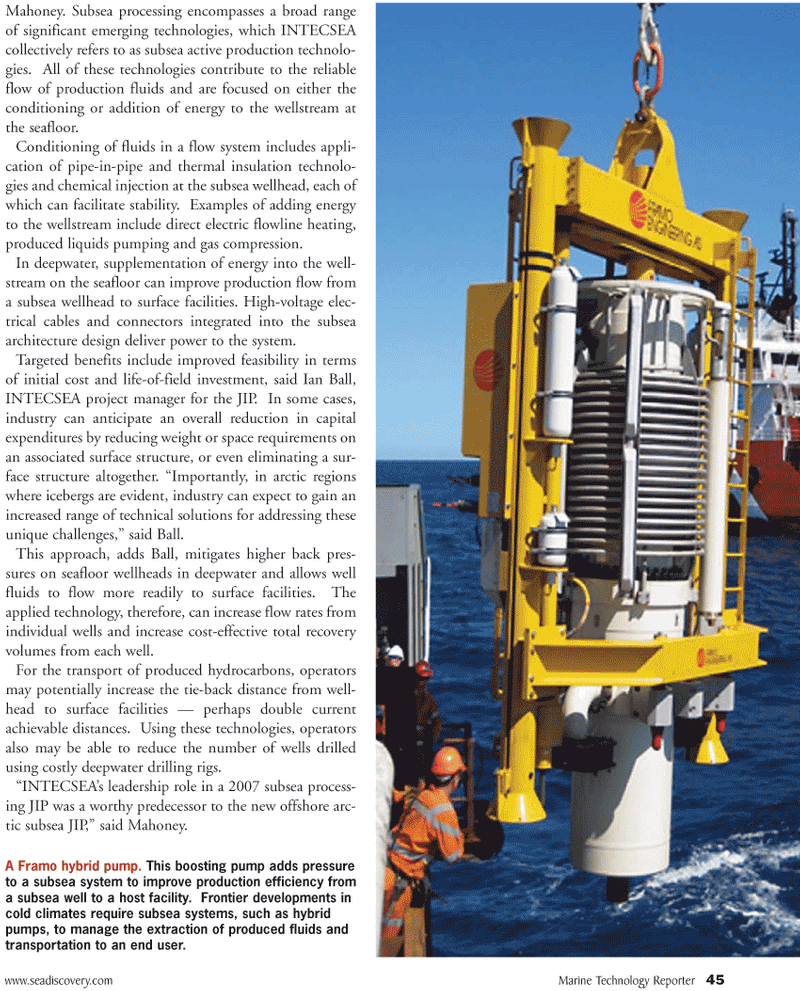
Page 45: of Marine Technology Magazine (June 2011)
Hydrographic Survey
Read this page in Pdf, Flash or Html5 edition of June 2011 Marine Technology Magazine
www.seadiscovery.com Marine Technology Reporter 45
Mahoney. Subsea processing encompasses a broad range of significant emerging technologies, which INTECSEA collectively refers to as subsea active production technolo- gies. All of these technologies contribute to the reliable flow of production fluids and are focused on either the conditioning or addition of energy to the wellstream at the seafloor.
Conditioning of fluids in a flow system includes appli- cation of pipe-in-pipe and thermal insulation technolo- gies and chemical injection at the subsea wellhead, each of which can facilitate stability. Examples of adding energy to the wellstream include direct electric flowline heating, produced liquids pumping and gas compression.
In deepwater, supplementation of energy into the well- stream on the seafloor can improve production flow from a subsea wellhead to surface facilities. High-voltage elec- trical cables and connectors integrated into the subsea architecture design deliver power to the system.
Targeted benefits include improved feasibility in terms of initial cost and life-of-field investment, said Ian Ball,
INTECSEA project manager for the JIP. In some cases, industry can anticipate an overall reduction in capital expenditures by reducing weight or space requirements on an associated surface structure, or even eliminating a sur- face structure altogether. “Importantly, in arctic regions where icebergs are evident, industry can expect to gain an increased range of technical solutions for addressing these unique challenges,” said Ball.
This approach, adds Ball, mitigates higher back pres- sures on seafloor wellheads in deepwater and allows well fluids to flow more readily to surface facilities. The applied technology, therefore, can increase flow rates from individual wells and increase cost-effective total recovery volumes from each well.
For the transport of produced hydrocarbons, operators may potentially increase the tie-back distance from well- head to surface facilities — perhaps double current achievable distances. Using these technologies, operators also may be able to reduce the number of wells drilled using costly deepwater drilling rigs. “INTECSEA’s leadership role in a 2007 subsea process- ing JIP was a worthy predecessor to the new offshore arc- tic subsea JIP,” said Mahoney.
A Framo hybrid pump. This boosting pump adds pressure to a subsea system to improve production efficiency from a subsea well to a host facility. Frontier developments in cold climates require subsea systems, such as hybrid pumps, to manage the extraction of produced fluids and transportation to an end user.

 44
44

 46
46
